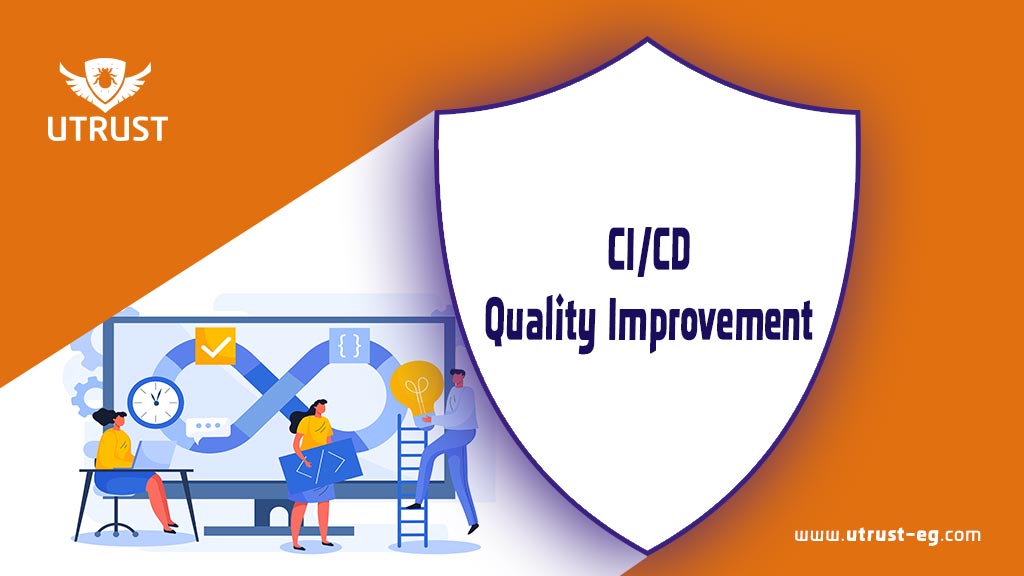How to improve the quality of Continuous Integration and Continuous Deployment (CI-CD) by defining tools, Implementations, and testing processes.
What is CI-CD?
CI-CD is an acronym for Continuous Integration and Continuous Deployment (or Continuous Delivery). It is a software development methodology that emphasizes frequent and automated code integration, testing, and deployment. The goal of CI/CD is to deliver software faster, with higher quality, and at a lower cost.
The CI/CD process starts with continuous integration, where developers frequently merge their code changes into a shared repository. The code changes are then automatically built, tested, and reviewed for quality. This helps to catch issues early in the development cycle, before they become more significant problems.
What are some factors that organizations should consider when choosing a CI/CD tool?
Choosing the right CI/CD tool is critical to the success of any DevOps initiative. Here are some factors that organizations should consider when choosing a CI/CD tool:
- Integration with existing tools: Organizations should consider whether the CI/CD tool integrates with their existing tools, such as source code management systems, issue trackers, and collaboration platforms. Integration with existing tools can streamline workflows and reduce complexity.
- Scalability: Organizations should consider whether the CI/CD tool can handle the scale of their projects. A tool that can’t scale to meet the needs of the organization can slow down development and deployment, leading to delays and increased costs.
- Ease of use: Organizations should consider whether the CI/CD tool is easy to use and configure. A tool that is difficult to use can lead to frustration and resistance from team members, slowing down adoption.
- Customizability: Organizations should consider whether the CI/CD tool can be customized to meet their specific needs. A tool that can’t be customized can limit the organization’s ability to optimize their workflow and processes.
- Security: Organizations should consider whether the CI/CD tool meets their security requirements. A tool that doesn’t provide adequate security features can put the organization’s data and infrastructure at risk.
- Cost: Organizations should consider the cost of the CI/CD tool, including the cost of licensing, maintenance, and support. A tool that is too expensive can strain the organization’s budget, while a tool that is too cheap may not provide the necessary features and support.
- Community support: Organizations should consider whether the CI/CD tool has an active community of users and developers. A tool with an active community can provide valuable resources, such as documentation, tutorials, and plugins.
How can organizations ensure that their chosen CI/CD tool is effectively implemented?
Effective implementation of a CI/CD tool is essential to achieving the benefits of DevOps, such as faster time-to-market, improved code quality, and increased collaboration. Here are some ways organizations can ensure that their chosen CI/CD tool is effectively implemented:
- Define clear goals: Organizations should start by defining clear goals for their CI/CD implementation. Goals should be specific, measurable, achievable, relevant, and time-bound (SMART). This will help to ensure that everyone is aligned on the objectives and can work towards achieving them.
- Establish a clear process: Organizations should establish a clear process for implementing their CI/CD tool. The process should include steps such as planning, installation, configuration, testing, and deployment. Each step should be well-defined and documented to ensure consistency and transparency.
- Invest in training: Organizations should invest in training for team members who will be using the CI/CD tool. This includes training on how to use the tool, as well as training on the underlying concepts of DevOps, such as automation, continuous testing, and continuous deployment.
- Involve stakeholders: Organizations should involve stakeholders from across the organization in the CI/CD implementation process. This includes developers, testers, operations teams, and management. Involving stakeholders helps to ensure that everyone is aligned on the goals and can provide valuable input and feedback.
- Monitor and measure: Organizations should monitor and measure the effectiveness of their CI/CD implementation. This includes tracking key metrics such as build time, deployment frequency, and defect rate. Monitoring and measuring help to identify areas for improvement and ensure that the implementation is meeting the goals.
- Continuously improve: Organizations should continuously improve their CI/CD implementation. This includes identifying areas for improvement, such as bottlenecks in the pipeline, and implementing changes to address them. Continuous improvement helps to ensure that the CI/CD implementation is always evolving and improving.
What are some common challenges that organizations face when implementing CI/CD processes?
Implementing a CI/CD process can be a complex endeavor, and organizations often face several challenges when trying to adopt this approach. Here are some common challenges that organizations face when implementing CI/CD processes:
- Cultural resistance: Implementing CI/CD processes requires a cultural shift towards collaboration, automation, and continuous improvement. Resistance to change can come from many sources, including developers, testers, and operations teams.
- Lack of tooling: Implementing CI/CD processes requires the right tools to automate builds, testing, and deployment. Organizations may need to invest in new tools or integrate existing ones into their CI/CD pipeline.
- Limited expertise: CI/CD processes require a certain level of expertise in automation, testing, and deployment. Organizations may need to hire new talent or train existing staff to fill skill gaps.
- Legacy systems: CI/CD processes are easier to implement in greenfield projects than in legacy systems. Organizations with legacy systems may need to undertake significant refactoring or even rebuild their applications to make them compatible with CI/CD processes.
- Security and compliance: CI/CD processes require careful attention to security and compliance. Organizations need to ensure that their applications meet regulatory requirements and that their CI/CD pipeline is secure.
- Scalability: CI/CD processes need to be scalable to handle an increasing number of users and updates. Organizations need to ensure that their CI/CD pipeline can handle this increased volume without sacrificing quality.
- Integration with existing processes: CI/CD processes need to integrate with existing processes, such as change management, IT service management, and release management. Organizations need to ensure that their CI/CD pipeline fits into their existing processes and doesn’t disrupt them.
How can the software testing help organizations in CI/CD quality improvement?
Software testing plays a crucial role in enabling Continuous Integration and Continuous Deployment (CI/CD) processes. CI/CD is a software development methodology that emphasizes frequent and automated code integration, testing, and deployment. The goal of CI/CD is to deliver software faster, with higher quality, and at a lower cost. Testing is an essential part of this process, as it ensures that changes made to the codebase don’t introduce errors or bugs that could impact the software’s functionality.
Here are some ways software testing can help in CI/CD:
- Early detection of issues: Automated testing can detect issues early in the development process, allowing developers to address them before they become more significant problems. This can save time and resources in the long run.
- Improved code quality: Testing helps ensure that code changes are of high quality and meet the necessary requirements. This can help prevent issues from arising in production and ensure that the software is functioning as expected.
- Faster feedback: Automated testing provides quick feedback on code changes and allows developers to catch issues before they are merged into the codebase. This helps eliminate the need for manual testing and speeds up the development process.
- Continuous testing: Automated testing can be integrated into the CI/CD pipeline, allowing for continuous testing as code changes are made. This ensures that changes are tested thoroughly and quickly, reducing the risk of issues in production.
- Better collaboration: Testing can help facilitate better collaboration between developers and testers. By sharing test results and feedback, developers can work more closely with testers to improve the quality of the software.
- Support continuous improvement: By testing code changes continuously, organizations can identify areas for improvement and implement changes to address them. This supports a culture of continuous improvement and helps organizations to deliver better software over time.
- Ensure compliance: Testing can help organizations ensure that their software meets regulatory and compliance requirements. This is especially important in industries such as healthcare, finance, and government.
- Increase confidence in deployments: By testing code changes thoroughly, organizations can increase their confidence in deployments. This helps to minimize the risk of errors and reduce the time required for debugging and fixing issues after deployment.
- Ensure reliability: Testing can ensure that the software is reliable and performs as expected. This helps to minimize downtime and ensure that the software meets the needs of users.
In summary, software testing plays a critical role in helping organizations improve the quality of their software in the context of CI/CD. By detecting defects early, improving code quality, ensuring reliability, increasing confidence in deployments, ensuring compliance, and supporting continuous improvement, testing can help organizations deliver high-quality software that meets the needs of users.
Comments are closed.





